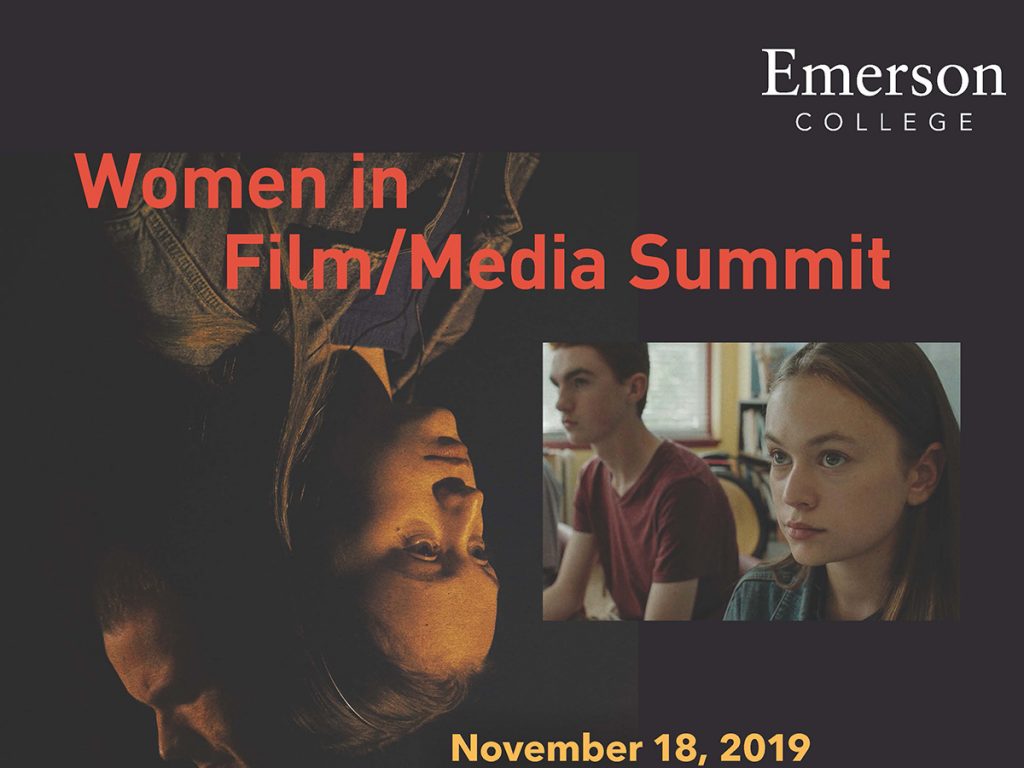Second Women in Film and Media Summit Looks to Cut Gender Inequity

By Erin Clossey
Pop quiz: Of the 112 directors of the 100 top grossing films of 2018, how many were women?
Answer, according to the Annenberg Inclusion Initiative at the University of Southern California: five, or 4.5 percent.
Four years ago, Visual and Media Arts Professor Cristina Kotz Cornejo assembled a group of women filmmakers to share their experiences in the industry and discuss ways to make film and television more inclusive in the first Emerson College Women in Film and Media Summit .
This year, with industry trends on gender stalled or going in the wrong direction, and a new crop of students studying to enter careers in a media making, Cornejo decided to reprise the summit with three panels, an Industry Luncheon open exclusively to students, and an Emerson-only pre-release screening of Nicole Dorsey’s Black Conflux.
The 2019 Women in Film and Media Summit will be held Monday, November 18, 10:45 am-10:00 pm, in the Paramount Center. With the exception of the luncheon and screening, the event is free and open to the public.
“We’re seeing a little bit of progress, especially in television, but if you look at the statistics, the numbers are still pretty dismal, and it’s even worse for women of color,” Cornejo said.
About those statistics:
Among the 250 top grossing films of 2018, according to the Center for the Study of Women in Television and Film at San Diego State University, 8 percent of directors were women. That’s not only down from 2017 (11 percent), it’s down from 1998 (9 percent).
And it’s not just directors. Twenty percent of above-the-line roles (directors, writers, producers, executive producers, editors, and cinematographers) in 2018 went to women, according to San Diego State.
“Women of color are nearly invisible in film production – whether as directors, producers, or in below-the-line crew positions,” writes Dr. Stacey L. Smith, author of USC Annenberg’s “Inclusion in the Director’s Chair” report.
“Especially being on the East Coast, being in Boston, I feel it’s important for our students to have access to see women making achievements, even if it’s slow, and even if in some ways, they’re the exception,” Cornejo said. “But they also represent the ability to push through and serve as role models, and are people who are trying to change the landscape.”
In coordinating the summit, Cornejo worked with Women in Motion, a campus organization that works to support women film and media makers.
“We got involved because we felt women in film and media makers needed something of our own,” Women in Motion President Susana Obando ’20 said. “We were thinking there are so many female students on campus who are overlooked.”
Senior Distinguished Producer-in-Residence Linda Reisman (Leave No Trace, The Danish Girl) will join writer/directors Nicole Dorsey (Black Conflux) and Maryam Keshavarz (Circumstance), and composer Germaine Franco (Dora and the Lost City of Gold) for a panel on Strategizing Your Creative Future.
Producer/distributor Karin Chien, Amazon Studios executive Latasha Gillespie, set decorator and production designer Devynne Lauchner ’14, and filmmaker/artist Michèle Stephenson will discuss The Changing Landscape of Inclusive Storytelling.
One topic Cornejo said she wanted to be sure to include is the role of inclusion in emerging media (virtual reality, augmented reality, gaming, animation, etc.).
“[Emerging media] is predominantly dominated by men, so I wanted to include this conversation: who has access, how to establish equity, how to think about equity in a male-dominated field,” she said.
Access and Equity in Emerging Media will feature Emerson Assistant Professor Rahin Fahandej, a transdisciplinary artist; Professor Anya Belkina, an animator; and Sarah Wolozin, director of the MIT OpenDoc Lab.
For more information on the summit, visit the website.
Categories